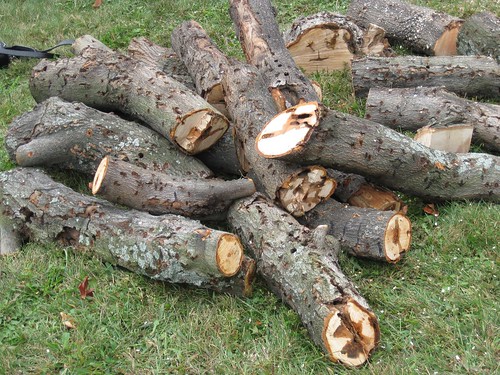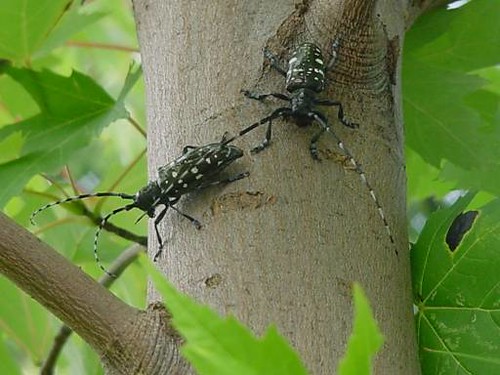
Imagining our communities without trees is hard to fathom. Unfortunately, there is an insect that threatens the trees we love – the Asian longhorned beetle (ALB). It’s an invasive insect that feeds on certain species of hardwood trees, eventually killing them. Since its discovery in the United States, the beetle has caused tens-of-thousands of trees to be destroyed in Massachusetts, New Jersey, New York, Illinois, and most recently in Ohio.
With spring in bloom, I am reminded of my love for the outdoors. I believe in APHIS’s mission to save trees from this invasive insect. After all, an ALB infestation is a sad tale for trees, since they are essentially being eaten alive.
In her lifetime, an adult female chews up to 90 egg sites directly on the bark of a tree to lay her eggs. After the eggs hatch, the worm-like larvae tunnel into the growing layers of the tree. After several weeks, the larvae tunnel into the woody tissue of the tree, where they feed and develop over the winter. This feeding and burrowing causes the tree to weaken and eventually die.
This is when the beetle larvae develop into adults, and in early summer, they chew their way out, leaving dime-sized, perfectly round exit holes, starting their life cycle and destruction all over again.
Please be on the lookout for signs of damage and the insect itself. With these unique characteristics, the insect is easy to spot:
- 1 to 1 ½ inches in length
- Long antennae banded in black and white (longer than the insect’s body)
- Shiny, jet black body with random white spots
- Six legs
- Legs may appear bluish in color
In addition to looking for the beetle, you can search for signs of infestation, including:
- Shallow divots in the bark where the eggs are laid
- Dime-sized (1/4” or larger), perfectly round exit holes in the tree
- Sawdust-like materials, called frass, on the ground and the branches
- Sap seeping from wounds in the tree

More information about the beetle that can be found online at www.BeetleBusters.info.
Eradication is possible. In August 2011, the trees in Islip, N.Y., were declared free of the destructive beetle. Previously, Illinois and Hudson County, N.J. declared eradication in 2008.
We’re in this fight together, and you can make a difference in helping to save trees. Help stop the Asian longhorned beetle’s destruction by raising awareness about the pest and report any signs or symptoms of an infestation immediately.

